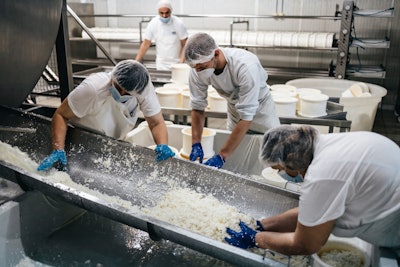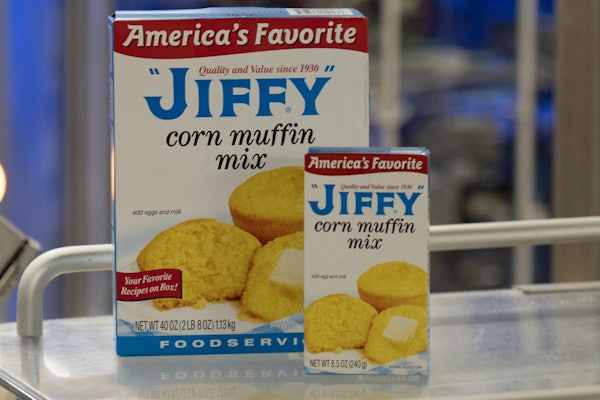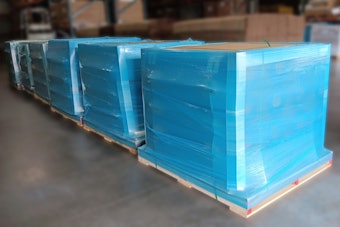Dr. Bryan Griffen is the President of Griffen Executive Solutions.
The food and beverage manufacturing industry is facing a labor crisis that threatens productivity, efficiency, and long-term growth. As labor shortages persist, companies are struggling to recruit and retain skilled workers in an increasingly competitive hiring landscape. Traditional recruitment methods are no longer enough, and outdated retention strategies are failing to keep employees engaged. To thrive in this environment, food manufacturers must rethink their approach, modernizing hiring practices and creating workplaces that attract and retain top talent.
Recent U.S. labor market data underscores these challenges. According to the latest U.S. jobs report, nonfarm payroll employment increased by 143,000 in January 2025, while the unemployment rate fell to 4.0% (Bureau of Labor Statistics). With fewer unemployed workers in the talent pool, companies must find ways to stand out in an increasingly competitive job market.
This article explores the key factors driving labor shortages, strategies to improve hiring and retention, and a case study of a company that successfully transformed its workforce approach.
The workforce shortage in food manufacturing
The struggle to find and keep skilled workers isn’t a temporary challenge—it’s the result of long-term industry shifts. The aging workforce is one of the most significant factors, with experienced workers retiring faster than new talent can replace them. At the same time, fewer young professionals are entering the field, opting instead for careers in technology, logistics, and other high-growth industries.
Worker expectations have also changed. Younger employees prioritize career growth, workplace culture, and flexibility over traditional long-term job security. Many companies are finding that outdated recruitment strategies—focusing solely on wages and job stability—are no longer enough to attract this new generation of workers.
Adding to the challenge is the increased competition for talent. Food manufacturers aren’t just competing with each other; they’re also contending with industries that offer higher wages, flexible work environments, and faster career advancement. Without proactive hiring and retention strategies, companies risk higher turnover, increased training costs, and operational inefficiencies.
Modernizing recruitment to compete for talent
To attract top candidates, food manufacturers need to revamp their approach to hiring. One of the most effective strategies has been hosting targeted career fairs to connect directly with students and emerging talent. Traditional job postings often fail to capture the attention of younger candidates, whereas in-person recruiting events allow companies to build relationships with prospective employees before they enter the general job market.
Expanding the talent pipeline is also crucial. Companies that actively partner with vocational schools, universities, and technical training programs can create internship and apprenticeship opportunities that lead to full-time employment. Some forward-thinking manufacturers are even developing structured career pathways for high school graduates, veterans, and workers transitioning from other industries.
Speed is another critical factor. Many companies lose top candidates simply because their hiring processes take too long. Streamlining recruitment—through AI-driven resume screening, structured interviews, and fast-track hiring programs—ensures that companies don’t miss out on qualified applicants who receive competing job offers.
Beyond improving efficiency, companies must also focus on employer branding to differentiate themselves from the competition. Today’s job seekers aren’t just looking for a paycheck: They want to work for companies that align with their values and offer clear growth opportunities. Businesses that highlight their company culture, employee success stories, and development programs through social media and recruitment marketing can gain a competitive edge in attracting high-caliber talent.
Retaining employees through career growth and workplace culture
Attracting employees is only half the battle; keeping them engaged and committed is just as critical. One of the most effective ways to improve retention is to provide structured career development opportunities. Employees who see a clear path for advancement are far more likely to stay with an organization. Companies that invest in leadership training, rotational programs, and tuition reimbursement create an environment where employees feel valued and motivated to grow within the company.
Competitive compensation remains important, but benefits and work-life balance play an increasingly significant role in retention. Many manufacturers are moving beyond traditional benefits packages by offering flexible scheduling, enhanced healthcare and wellness programs, and even stock ownership options to give employees a greater sense of investment in the company’s success.
Workplace culture also plays a crucial role. Employees are more likely to stay in environments where they feel respected, engaged, and recognized for their contributions. Open communication between employees and leadership, peer recognition programs, and performance-based incentives all help foster a positive work environment. Companies that actively listen to employee feedback and address concerns—whether through engagement surveys, town halls, or one-on-one meetings—build trust and loyalty with a workforce.
Another key factor in retention is addressing employee well-being. Workplace stress and burnout contribute significantly to high turnover rates. Companies that proactively support mental health initiatives, improve ergonomics, and create work environments that promote a healthy work-life balance see measurable improvements in job satisfaction and overall retention.
Case study: A large food manufacturer’s workforce transformation
One large international food company recently faced severe hiring and retention challenges. Struggling to fill open positions with qualified candidates, leadership recognized that traditional hiring methods were no longer effective. To address this, the company took a proactive approach by hosting its own career fair, targeting graduating students from select universities.
During the event, candidates participated in a structured interview process, allowing the company to quickly assess talent and make hiring decisions. Those selected were placed into a rotational training program, which provided exposure to multiple aspects of the organization through six-month to one-year rotations. This approach not only gave employees a well-rounded understanding of the business but also helped management identify where each individual could make the greatest impact.
At the end of the program, employees transitioned into permanent management positions based on their skills, experience, and preferences. By providing structured career growth from the outset, the company significantly increased retention rates, reducing turnover and ensuring a steady flow of well-trained talent into leadership roles.
This case study highlights a critical takeaway: Modern hiring and retention strategies require more than just filling open positions—they must create a path for long-term employee success.
Building a workforce for the future
With labor shortages persisting and competition for skilled workers intensifying, food manufacturers must rethink how they attract, develop, and retain employees. Companies that invest in proactive recruitment efforts, structured career development, and a strong workplace culture will build more resilient, engaged, and productive workforces.
The labor market is changing, and food manufacturers must adapt. Those who modernize their hiring strategies, create compelling career pathways, and invest in employee well-being will be best positioned to navigate the challenges ahead and build a workforce that drives long-term success.
Final Thoughts
As the workforce landscape continues to evolve, food manufacturers that take a proactive, employee-focused approach will have a clear advantage in both recruitment and retention. By creating workplaces where employees see a future for themselves, companies can turn today’s hiring challenges into opportunities for long-term stability and growth.
How is your company adapting to the labor market changes? Share your experiences and insights—we’d love to hear from you.

























